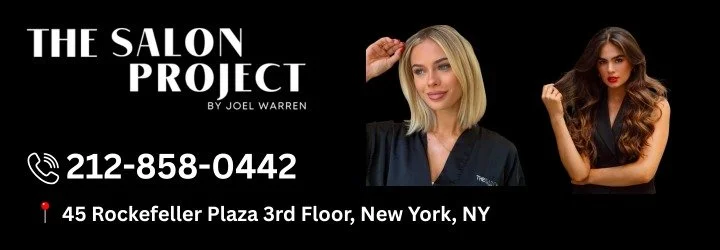Why Did My Balayage Turned Orange? Understanding, Preventing, and Correcting Unwanted Warm Tones in Your Hair
If you've recently gotten a balayage and are now asking yourself, "why did my balayage turned orange?", you're not alone. Many hair enthusiasts experience this unexpected shift in hair color, especially when transitioning from darker hair tones or attempting a lighter, sun-kissed look. Understanding why this happens and how to prevent it in the future is crucial for maintaining the beautiful, natural-looking balayage you desire.
Balayage is a hair coloring technique that provides a soft, graduated look from darker roots to lighter ends. However, when the result is a brassy or orange tone, it can be disappointing. Let’s explore the causes, solutions, and expert tips, including how professionals at The Salon Project by Joel Warren ensure flawless results.
Understanding the Science Behind Brassy Balayage
Balayage involves lifting the natural hair color to create highlights. Hair naturally contains underlying pigments that affect how the color develops. Dark hair, in particular, has red and orange pigments beneath the surface. When lightening your hair, these pigments can become visible, causing a warm or orange hue if not properly neutralized.
A common reason your balayage turned orange is insufficient toner. Toners are used to counteract warm pigments after lightening. If your stylist skips this step or uses the wrong toner, your hair may appear more orange than desired. Additionally, the strength of the bleach, the duration of processing, and your hair’s natural color all play a role.
Common Causes of Orange Balayage
Several factors can contribute to an unwanted orange tone in balayage:
Natural Hair Pigments
Dark brown or black hair contains higher levels of red and orange pigments. When lifted, these underlying tones may emerge, creating an orange effect.Inadequate Lightening
Balayage requires precise lightening. If the bleach does not lift the hair enough, the warm pigments will remain dominant.Wrong Toner or Color Choice
Using a toner that doesn’t neutralize red or orange undertones can leave the hair looking brassy.Hair Damage or Porosity
Over-processed or porous hair absorbs color unevenly, which can intensify warm tones.Home Coloring Mistakes
Attempting balayage at home without professional guidance increases the risk of orange results. Incorrect timing, uneven application, or skipping toning can lead to brassy outcomes.
How Professionals at The Salon Project by Joel Warren Handle Brassy Hair
At The Salon Project by Joel Warren, expert stylists understand the complexities of balayage. They perform a thorough consultation before coloring, analyzing your hair’s natural pigment, condition, and desired outcome. By using high-quality products and professional techniques, they ensure the lift is even and the tones are balanced.
If your balayage turns orange, the stylists at The Salon Project can correct it with precision. They use professional toners specifically designed to neutralize brassy tones, leaving the hair with soft, natural highlights. Their expertise also ensures minimal damage, maintaining the hair’s integrity while achieving the perfect sun-kissed look.
Tips to Prevent Orange Balayage
Preventing unwanted orange tones starts with proper preparation and professional guidance:
Consult with a Professional Stylist
A professional will assess your hair’s natural color and determine the right bleaching and toning process.Choose the Right Shade
Understanding your hair’s underlying pigments helps in selecting the appropriate balayage shade that complements your complexion.Use Quality Products
High-quality bleach and toners minimize the risk of brassy results and protect hair health.Maintain Hair Health
Healthy hair responds better to color. Deep conditioning treatments and avoiding excessive heat can reduce uneven lifting.Regular Touch-Ups
Balayage is low-maintenance but requires occasional toning to keep warm tones under control.
At-Home Solutions for Orange Balayage
If you notice your balayage has turned orange, there are a few corrective measures you can take at home, though professional intervention is often best:
Purple Shampoo: Purple shampoo neutralizes orange and brassy tones. Use it once or twice a week.
Gloss Treatments: Color-depositing glosses help adjust the tone without harsh chemicals.
Deep Conditioning: Restores moisture to over-processed hair, improving color absorption.
However, for stubborn orange tones or significant color correction, visiting a salon like The Salon Project by Joel Warren is highly recommended.
Corrective Treatments at The Salon Project by Joel Warren
Professional color correction is the safest and most effective way to fix orange balayage. At The Salon Project, stylists employ specialized techniques such as:
Custom Toners: Neutralize unwanted warmth while enhancing your natural highlights.
Balayage Rebalancing: Adjusting the placement and intensity of highlights for a seamless, natural effect.
Olaplex and Bond-Repair Treatments: Protect and strengthen hair during the lightening process.
Their goal is not just to fix color but to ensure your hair remains healthy and radiant after treatment.
Final Thoughts on Why Balayage Turns Orange
Unintended orange balayage is a common issue caused by natural hair pigments, incorrect toning, or uneven bleaching. While at-home solutions like purple shampoo can help, professional expertise ensures a flawless, natural look. Stylists at The Salon Project by Joel Warren specialize in corrective coloring and can turn brassy hair into a perfectly blended, sun-kissed balayage.
By understanding the science behind hair color and relying on professional care, you can prevent and correct orange tones, enjoying the effortless, elegant balayage you envisioned.



